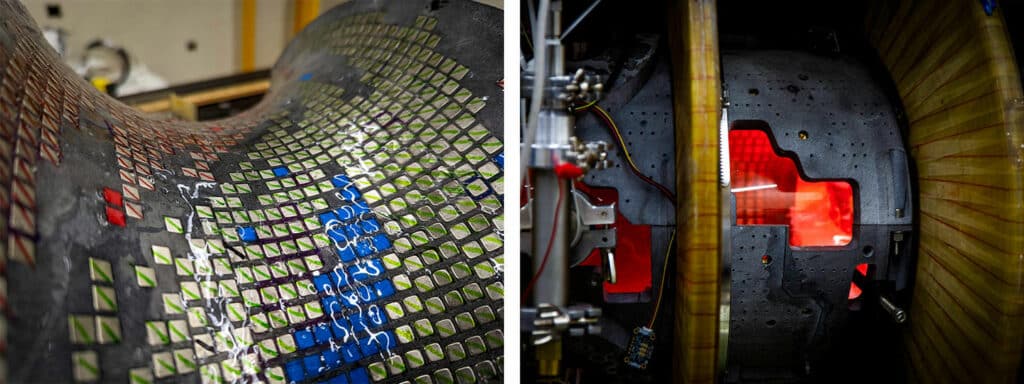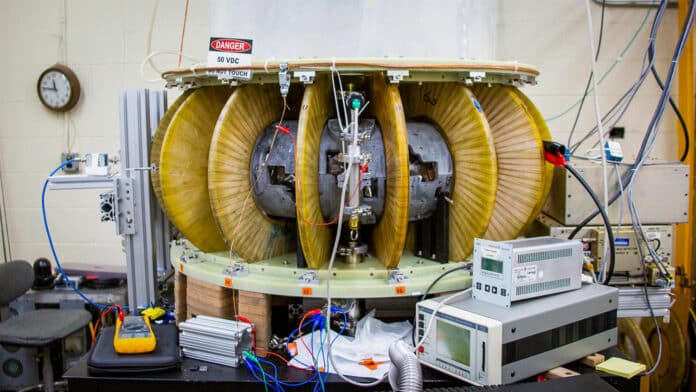The principles behind refrigerator magnets could potentially help us harness the holy grail of clean energy. Researchers at the Department of Energy’s Princeton Plasma Physics Laboratory (PPPL) have made a significant breakthrough with their new stellarator, a fusion reactor that uses these principles and off-the-shelf and 3D-printed materials to contain superheated plasma.
This is a promising step towards finding a solution to build future devices for less cost and allow researchers to test new concepts for future fusion power plants.
The stellarator confines plasma, the electrically charged fourth state of matter, to harness the fusion process that powers the sun and stars and potentially generate clean electricity.
The traditional stellarator, which was first conceptualized over 70 years ago by PPPL’s founder, Lyman Spitzer, operates differently compared to the tokamak reactors. It makes use of electromagnets that are arranged in complex shapes to create magnetic fields without the need for electric current to be passed through the plasma. This process avoids interference with fusion reactions.
Despite the advantages of the stellarator, tokamaks have been the preferred choice for researchers because they confine plasma effectively and are comparatively easier and cheaper to operate. As a result, Spitzer’s design has remained underutilized for many years.

The engineers behind a new stellarator called MUSE have come up with a solution to some of the barriers faced by traditional electromagnets. Instead of using electromagnets, MUSE uses much more powerful and finely tuned permanent magnets made using rare-earth metals that can exceed 1.2 teslas. This is a significant improvement over the 0.5-to-1 teslas typically exhibited by standard ferrite or ceramic permanent magnets.
“MUSE is largely constructed with commercially available parts,” said Michael Zarnstorff, a senior research physicist at PPPL and principal investigator of the project. “By working with 3D-printing companies and magnet suppliers, we can shop around and buy the precision we need instead of making it ourselves.”
The original insight that permanent magnets could be the foundation for a new, more affordable stellarator variety came to Zarnstorff in 2014. “I realized that even if they were situated alongside other magnets, rare-earth permanent magnets could generate and maintain the magnetic fields necessary to confine the plasma so fusion reactions can occur,” Zarnstorff said, “and that’s the property that makes this technique work.”
The new approach of building a stellarator with permanent magnets is a “completely new” approach. PPL graduate student Tony Qian explained that the stellarator alteration will make it easier for engineers to test plasma confinement ideas and construct new devices. Additionally, the MUSE manages quasisymmetric, specifically, a subtype called quasi axisymmetry, better than any previous stellarator.
In simpler terms, quasisymmetry in a stellarator means that the magnetic field inside the device is not the same as the field around the device’s physical shape. However, this does not affect the overall strength of the magnetic field, which can effectively confine the plasma and increase the chances of fusion reactions. “In fact, MUSE’s quasisymmetry optimization is at least 100 times better than any existing stellarator,” Zarnstorff said.
The recent discovery of MUSE’s quasisymmetry and the precise mapping of its magnetic fields could be a significant step towards achieving stable, net positive fusion reactions. This discovery was made using heavy-duty fridge magnets, showcasing the creative problem-solving capabilities of scientists.
While the future of green fusion energy remains uncertain, thanks to some creative problem-solving using what are ostensibly very heavy-duty fridge magnets, the long-overlooked stellarator could prove a valuable tool.
